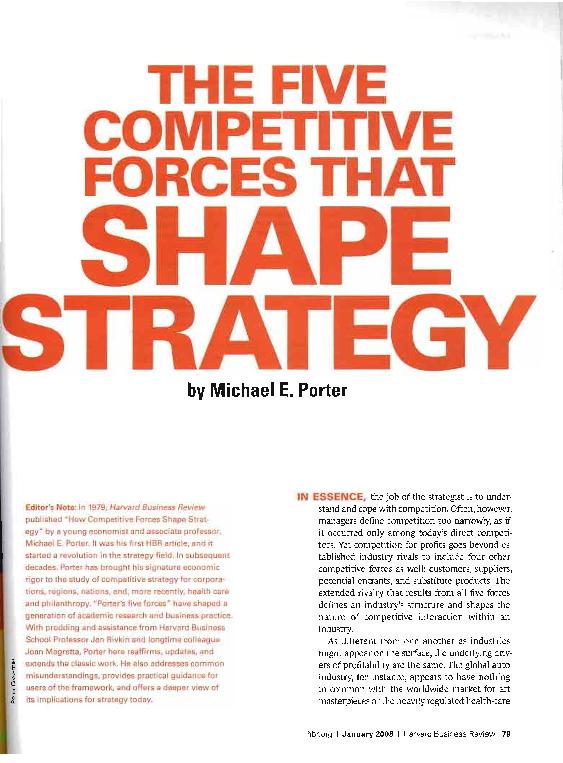The Five competitive forces that shape strategy

Contenido multimedia no disponible por derechos de autor o por acceso restringido. Contacte con la institución para más información.
| Tag | 1 | 2 | Valor |
|---|---|---|---|
| LDR | 00000nab a2200000 i 4500 | ||
| 001 | MAP20071509350 | ||
| 003 | MAP | ||
| 005 | 20220912145209.0 | ||
| 007 | hzruuu---uuuu | ||
| 008 | 080319e20080101usa|||| | |00010|eng d | ||
| 040 | $aMAP$bspa | ||
| 084 | $a922.111 | ||
| 100 | 1 | $0MAPA20080230104$aPorter, Michael E. | |
| 245 | 1 | 4 | $aThe Five competitive forces that shape strategy$cMichael E. Porter |
| 520 | 8 | $aIt is explained why a fast-growing industry is not always a profitable one, how eliminating today's competitors through mergers and acquisitions can reduce an industry's profit potential, how government policies play a role by changing the relative strength of the forces, and how to use the forces to understand complements. He then shows how a company can influence the key forces in its industry to create a more favorable structure for itself or to expand the pie altogether. The five forces reveal why industry profitability is what it is. Only by understanding them can a company incorporate industry conditions into strategy | |
| 650 | 1 | $0MAPA20080606091$aEstrategia empresarial | |
| 650 | 1 | $0MAPA20080568399$aCompetitividad | |
| 650 | 1 | $0MAPA20080606787$aInnovación empresarial | |
| 650 | 1 | $0MAPA20080594312$aVentaja competitiva | |
| 650 | 1 | $0MAPA20080555061$aManagement | |
| 740 | 0 | $aHarvard Business Review | |
| 773 | 0 | $wMAP20077100345$dBoston$gVol. 86, nº 1, January 2008; p. 79-93$tHarvard Business Review |

